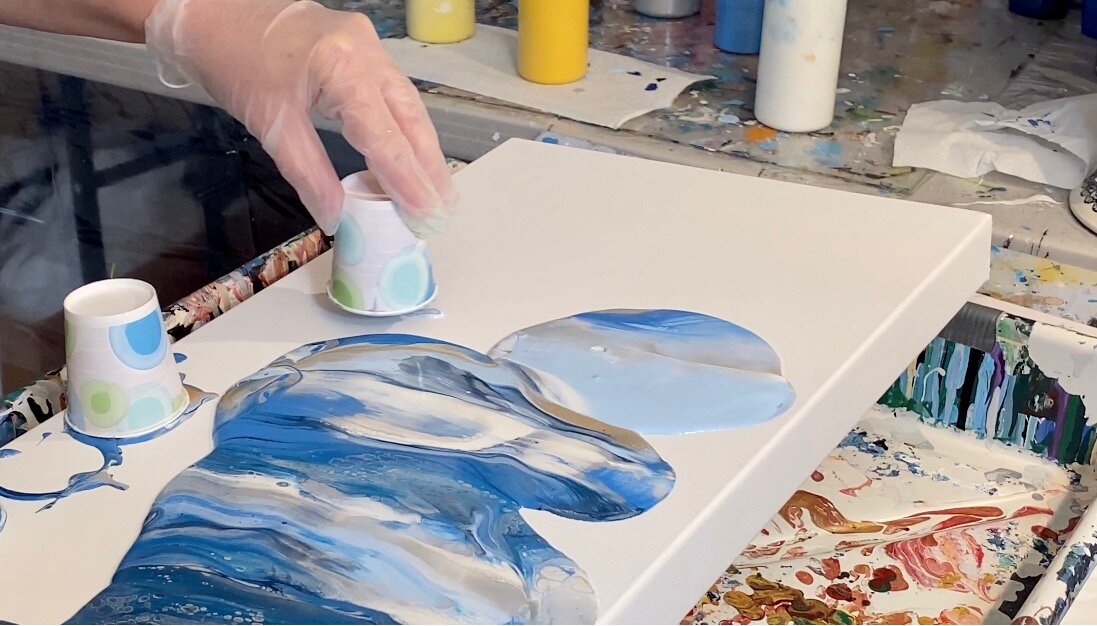What is Pouring?
A technique in which paint, or another liquid medium, is poured to create a flowing, (most often) abstract composition. While the origins of this technique lie in the experiments of David Alfaro Siqueiros, it was popularized in the works of Abstract Expressionists such as Jackson Pollock, Morris Louis, and Helen Frankenthaler. Poured compositions often depend on experimentation with materials and colors, and it is a technique used for other mediums, too—Lynda Benglis has poured materials to make three-dimensional sculptures.
My Process
I prepare the colors I want to use in a particular painting and I mix them with different mediums to thin them so they could flow more easily – sometimes I put some silicon, too. The consistency of the paints will affect the end result. I have spent countless hours developing my formulas and my color palette.
I use different methods to pour the colors onto the surface, depending on what I want to achieve. I drop, dribble, float, pour, or splatter onto the substrate. I rarely use brushes. I use cups, straws, hairdryers, paper towels, and palette knifes (for more specific designs) to manipulate the paint.
I also spread the paint by tilting the canvas to let it flow naturally. I apply more paint slowly and continue with the apply-and-tilt method until I am happy with the composition. This is not “just throwing paint here or there” and hoping for a good result, however. This method entails intentionality. Choosing the spot to drop the paint, choosing the paint that will be changed to a new color when the next layer of paint is added, choosing the chemical compositions and the viscosities of the two paints as new layers of paint push the previous ones to obtain a particular pattern, at the same time paying close attention to how the first layer of paints have begun to dry. During the process, I am continuously analyzing how one area is changing as I attempt to pour the next layer of paint to achieve what I have in my mind.
This is why each painting is unique and it is impossible to reproduce another one exactly like it. Even if one mixes and pours the same colors, the outcome will be different. The viscosity of the paints, the porosity of the substrate, the humidity and temperature in the studio, all these will affect the painting
It is particular challenging to paint impressionistic compositions (floral, landscapes, seascapes etc.) with these liquefied paints – and I welcome it happily!
I use professional acrylic paints. I love working with metallic paints, and many of my works have a shimmering effect which makes it difficult to photograph them, but I still love them!
I love the process as much as the end product! I love seeing the interplay of the materials, capturing them at a particular stage in the evolution of the composition or design. So now I am hooked!










